30+ Sample Goal Chart
-

Weekly Weight Loss Goal Chart
download now -

Fundraising Goal Chart Template
download now -
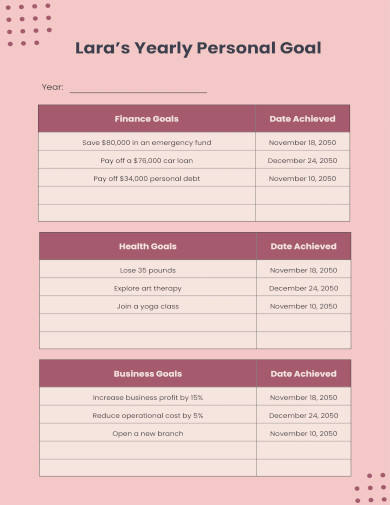
1 Year Goal Chart
download now -

Personal Goals Gantt Chart Template
download now -
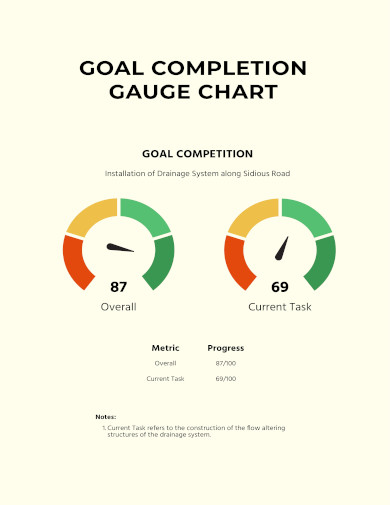
Goal Completion Gauge Chart
download now -
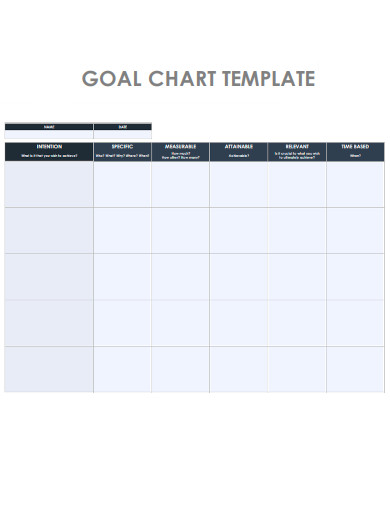
Goal Chart Template
download now -

Printable Goal Chart
download now -

Weight Loss Goal Chart
download now -
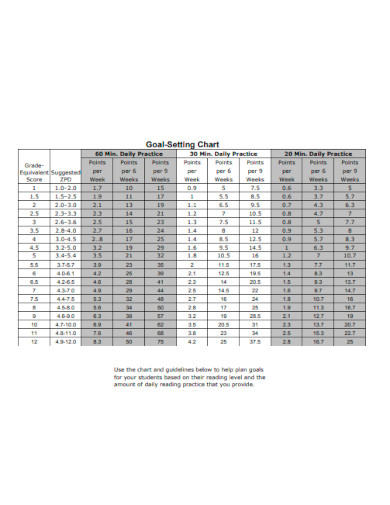
Goal Setting Chart
download now -
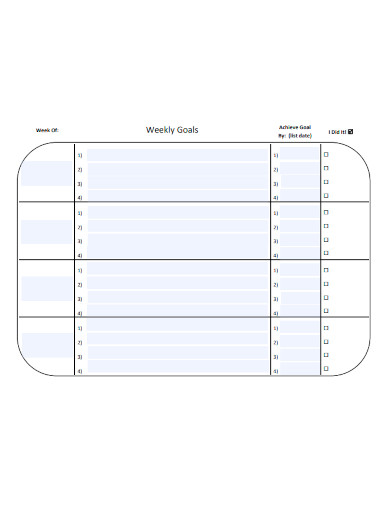
Weekly Goal Chart
download now -
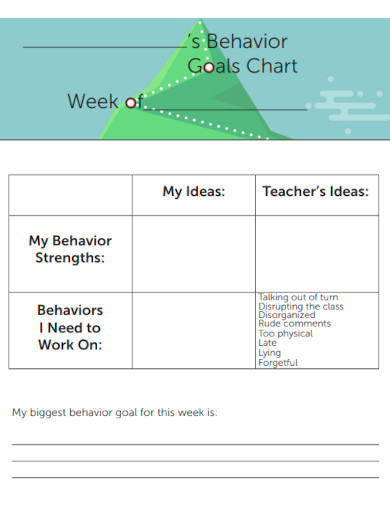
Behaviour Goal Chart
download now -

Monthly Goal Chart
download now -
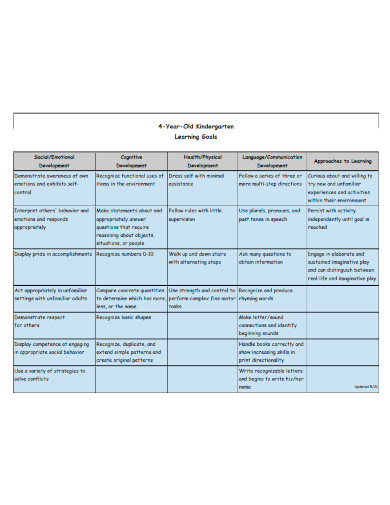
Kindergarten Goal Chart
download now -
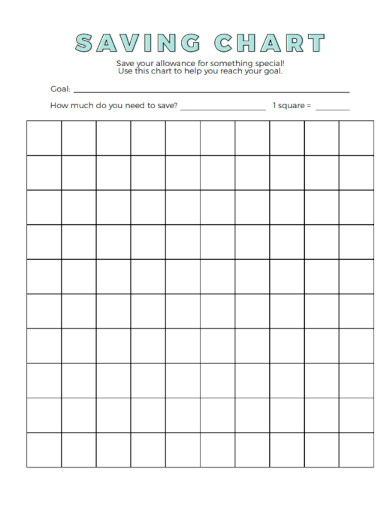
Saving Goal Chart
download now -

Goal Tracking Chart
download now -

Preschool Goal Chart
download now -

Blank Goal Chart Cookies
download now -

Daily Goal Chart
download now -
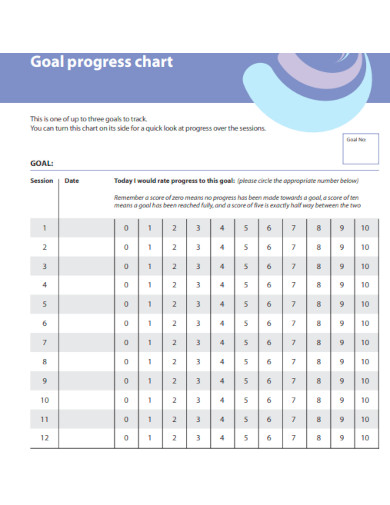
Goal progress chart
download now -
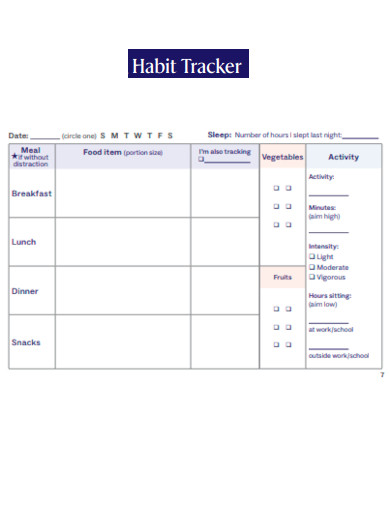
Habit Tracker Goal Chart
download now -
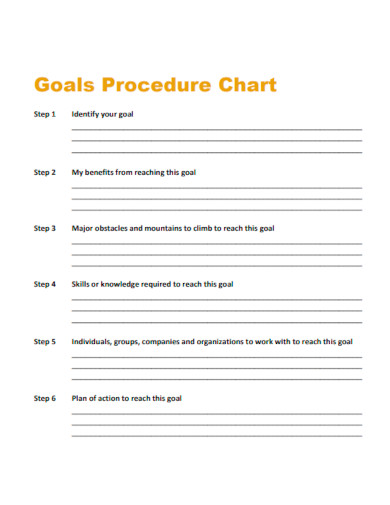
Goals Procedure Chart
download now -
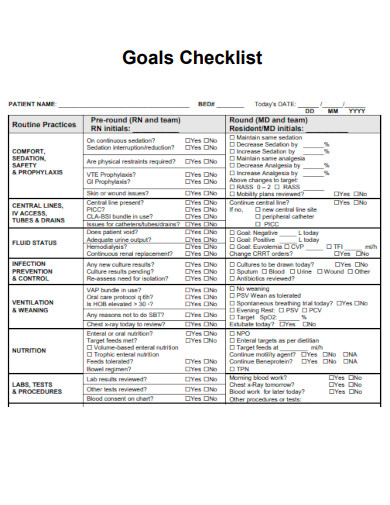
Goals Checklist Chart
download now -
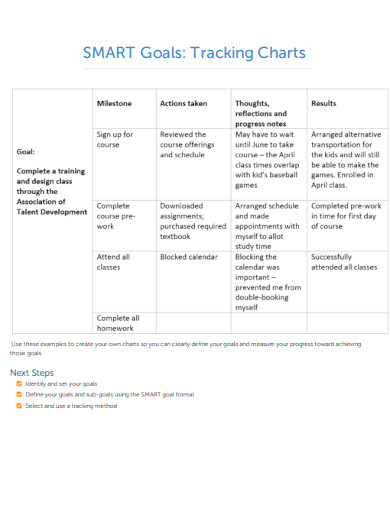
Smart Goal Chart
download now -

Words Per Minute Goal Chart
download now -
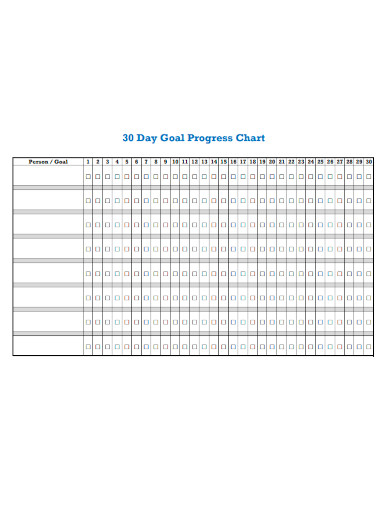
30 Day Goal Progress Chart
download now -
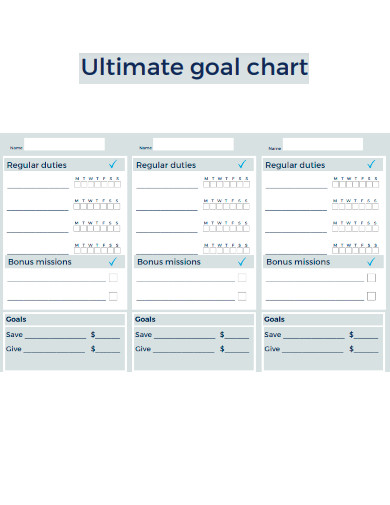
Ultimate Goal Chart
download now -

Scoreboard Goal Chart
download now -
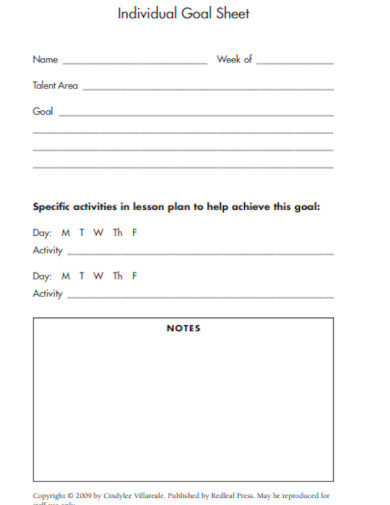
Individual Goal Chart
download now -
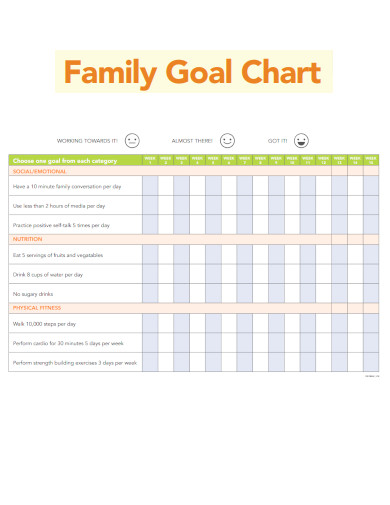
Family Goal Chart
download now -
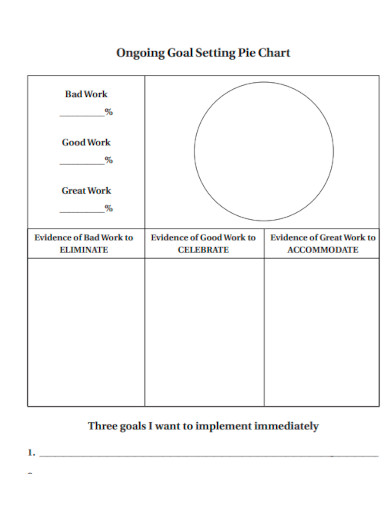
Ongoing Goal Setting Pie Chart
download now -
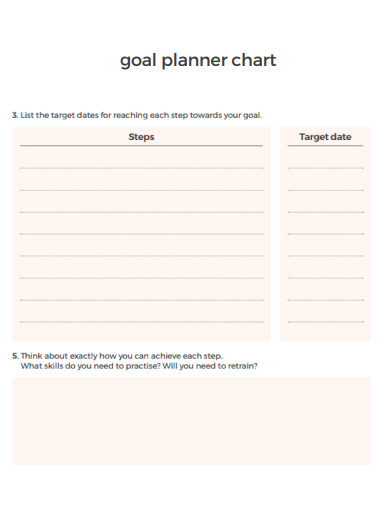
Goal Planner Chart
download now
What Is a Goal Chart?
A goal chart is an effective tool that can assist individuals and organizations in achieving their intended results. It provides a distinct road map for establishing and monitoring SMART goals. Goal or habit tracking is an excellent method for monitoring your progress. It is intended to be observational and reflective of actions taken. Using a goal tracker as a system of accountability can be beneficial if you are motivated by your past achievements.
Benefits of a Goal Setting
In today’s society, goal setting is constantly emphasized by motivational speakers, self-help literature, and all types of success stories. Setting objectives has become a standard method for attaining one’s ambitions, from personal growth to career development. Despite the frequency with which we hear about the importance of goal setting, it’s simple to question whether it’s merely a trendy buzzword or has actual merit. Is it essential to have a life goal to attain our desires? Listed below are several advantages of goal setting.
Tips for Reaching Your Goals
When you have a specific objective in mind, it is beneficial to have a system in place that will assist you in achieving it more efficiently. Setting and attaining goals is a crucial component of career development. Knowing how to achieve your goals can help you advance in your career. Consider whether you have any work-related dreams you wish to accomplish. Once you have an aim in mind, use the following strategies to achieve it more efficiently:
1. Set Attainable and Well-Defined Objectives
When setting an objective, you should ensure it is reasonable. To accomplish this, set SMART goals. Using the SMART method helps you establish objectives that are more likely to be achieved. Rather than creating plans that need more specificity, develop well-defined goals and outline the steps necessary to attain them. The more specific the objective, the simpler it will be to achieve.
2. Create a Strategy
Determine the steps necessary to attain your objectives. Consider dividing your overall goal into smaller subgoals. Plan one to three weekly actions that will bring you closer to reaching your goal. Concentrating on small activities over a long period ensures that you are following your plan and on the correct path to achieving your dream. It also enables you to attain minor victories while accomplishing your ultimate goal. This also allows you to track your progress more efficiently.
3. Set a Timeline
Determine a timeline that reflects how long it may take to achieve each sub-goal and overall objective once you have developed a plan. A timeline helps you remain accountable and meet your goal’s milestones. For example, if you neglect a deadline you set for a minor purpose, you may need to work harder and be more focused to reach your larger goal by the original deadline. Additionally, establishing a deadline can motivate you to continue with your plan.
4. Consider the Challenges
Depending on your objective, you may encounter obstacles preventing you from achieving it or completing it within the desired timeframe. Create a plan to assist you in overcoming potential obstacles in pursuing your objective. For instance, if you aim to achieve three design projects within a specific timeline, you may encounter barriers such as client feedback requiring you to rework certain aspects of a project plan. If this is the case, you may need to adjust your deadlines to accommodate these alterations. Having a contingency plan for these situations gives you a sense of how to handle these obstacles if they materialize.
5. Change Your Perspective and Visualize Your Objectives
When setting objectives, it is essential to have the proper mentality. Focus on your attitude throughout the endeavor and maintain a positive outlook. Looking at your aim with an optimistic perspective can help you keep the motivation to achieve it. Visualize yourself achieving your dreams if you need an additional motivational technique. Consider what it might be like and how you feel once you’ve accomplished your goal. Consider your objective’s positive impact on you and those around you. This helps you visualize the benefits of achieving your dream.
How to Set Goals
Some people may need help adhering to their goals because they must differentiate between them and their everyday self-improvement efforts. The decision to begin running does not necessarily constitute a conscious objective. So let’s revisit the definition of goal setting. Why do we fail to accomplish our goals if they are so crucial? Because we do not plan the necessary actions. A goal-setting process forces you to consider the journey rather than the destination. Here are some suggestions to bear in mind:
1. Document Your Objectives
If you write down your objectives and construct a detailed plan for achieving them, you may have a greater chance of achieving them. This method can be beneficial for both short- and long-term endeavors. Consider writing them down and maintaining a list where you will see them daily to help you remain focused and motivated to achieve your objectives.
2. Be Specific
Setting specific objectives can help you ensure that you know what you’re attempting to accomplish and take the necessary steps to do so. Visualize what achieving your desired outcome might appear like. This can help you establish a more specific goal and enable you to develop concrete strategy action plan for achieving it. For instance, you intend to attain the position of senior manager. Instead of writing “become a senior manager” on your list of sample goals, consider the specifics of this objective.
3. Select a Precise Due Date
Exact due dates allow you to divide your objectives into milestones. You can construct minor, manageable markers leading to your primary goal with these milestones with these milestones. Rather than stating that you intend to achieve a specific objective by the spring of next year, provide a date by which you intend to do so. Also, it is beneficial to select a date that is realistic and achievable. For instance, if you want to run a marathon, divide your objective into smaller steps, such as running two miles next month and four miles two months later.
4. Consider Your Motivation
You may feel more motivated to succeed if you have a compelling reason for pursuing your objective. The more specific and value-based your goal, the more likely you are to achieve it. For example, you should identify causes that align with your fundamental values to earn a million dollars. Also, you may have a greater chance of achieving your goals if they are quantifiable because you can better track what you have accomplished and what remains to be done. It may be beneficial to implement a metric for goal tracking.
5. Create a Comprehensive Action Plan
Mental objections are complex thoughts you may need to surmount to attain your objectives. A mental objection may be believing you are not intelligent or capable enough to achieve a goal. Identify and write down any mental objections, followed by the corresponding rebuttals. If you previously believed you lacked the intelligence to accomplish something, recall instances in which you performed extraordinary things. This can assist you in overcoming mental obstacles and realizing your immense potential.
6. Manage Your Time Effectively
Effective time management is essential for attaining your objectives. This can assist you in making consistent progress toward your dreams. Utilize one of the many effective time-management systems for optimal results. Determine the most effective system and implement it to achieve your goals. You can also invest in online training programs to improve your time management skills. Also, things can alter while pursuing a specific objective, so evaluating and adjusting your strategy as you progress is wise. Consider practical efforts and those that could be improved. You can also modify the aim to keep it relevant and attainable.
FAQs
Why learning goals are important?
Explicitly stated learning objectives allow students to reflect on and discuss their learning. They make it simpler for students to “know what they know” and allow students to express their knowledge. This awareness is considered essential for lasting learning.
Why do we need goals in learning?
Having objectives helps students concentrate and create a list of school-related accomplishments. Setting goals will allow you to allocate your time and resources more effectively. In addition, you will gain motivation when you lack inspiration or want to give up by referring to your objectives.
What is a performance goal?
Performance objectives are objectives that an employee is expected to attain within a specified time frame. Typically, these objectives are tied to specific job duties and are determined by analyzing the tasks list and responsibilities required of the employee.
After learning to set objectives, it may be helpful to consider what achieving those goals entails. Upon attaining an objective, commemorate your accomplishment by rewarding yourself or sharing the news with a friend, colleague, or mentor. Taking time to feel proud of your achievements can help you maintain future motivation and energy, especially for larger objectives. You can also consider the process of establishing and pursuing the goal. Consider the obstacles and measures and determine which were the most beneficial. This can help you decide on your next objective and what should be included in your sample plan.
